Tamron SP 70-200 mm f/2.8 Di VC USD
3. Build quality and image stabilization
As you can notice the stabilized 70-200 mm f/2.8 devices constitute a very tight group, being similar when it comes to the weight and physical dimensions. The minimum focus distance is also more or less the same, contained in a range from 1.2 to 1.4 meters. It is a pity the Tamron wasn’t able to maintain the excellent value of 0.95 of a meter, belonging to its predecessor. When it comes to the number of elements the Tamron and the Canon feature the highest number and the Nikkor has the fewest. All of them offer a 77 mm filter thread.
In the photo below the tested lens is positioned between the Canon EF 70–300 mm f/4.0–5.6 IS USM and the Tamron SP 90 mm f/2.8 Di MACRO 1:1 VC USD.
Please Support UsIf you enjoy our reviews and articles, and you want us to continue our work please, support our website by donating through PayPal. The funds are going to be used for paying our editorial team, renting servers, and equipping our testing studio; only that way we will be able to continue providing you interesting content for free. |
- - - - - - - - - - - - - - - - - - - - - - - - - - - - - - - - - - - - - - - - - - - - - - - -
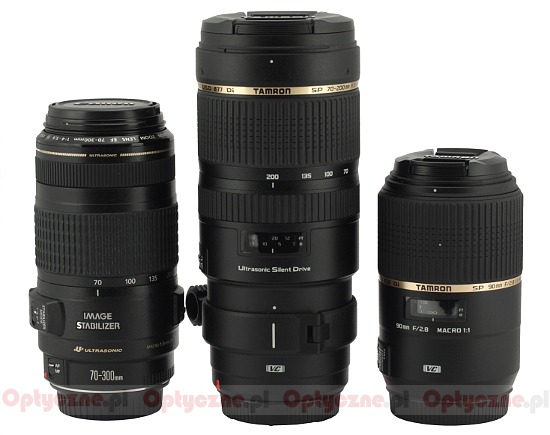 |
Let’s pass to describing the individual parts of the casing. The lens starts with a metal mount which surrounds contacts and a hole with a rear element. The rear element is immobile, hidden almost 2 cm inside, with a diameter of 28 mm. The inner tube close to it is properly blackened but between the housing’s edge with the rear element and the proper tube there is a small gap through which you can spot some electronic parts.
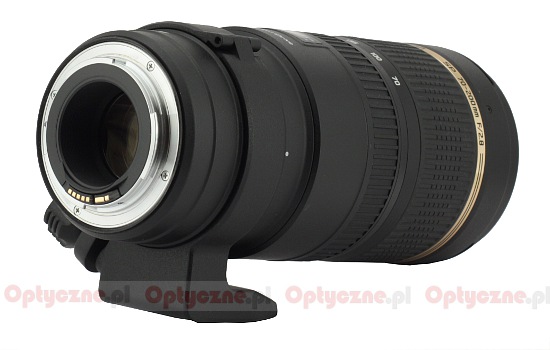 |
The first part of the proper casing of the lens is made of metal. You can find there a red marking, making the alignment with a body easier, and the “VC” inscription meaning that optical stabilization was implemented here. Further on, there is a place with a tripod adapter mount – the adapter is also metal, it looks very solid and, what’s more important, it is added in the product bundle.
The part of the tube behind the adapter is also made of metal but a little bit later you already see an outer layer made of plastics. The layer features first the “Ultrasonic Silent Drive” inscription, indicating that this lens has an ultrasonic autofocus motor, and right over it a distance scale behind a window, expressed in meters and feet. On the left there are additionally two switches. The first – AF/MF – is used to choose the working mode of the focusing mechanism; the second – VC ON/OFF – controls the optical stabilization.
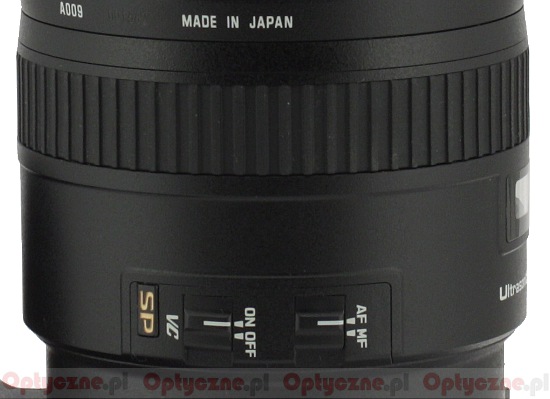 |
The next part is a manual focus ring. It is 17 mm wide and most of it is covered by thick, rubber ribs. It moves smoothly with quite small but even resistance. Running through the whole distance scale takes a turn through an angle of 130 degrees.
Immediately afterwards you get a zoom ring – it is as wide as 47 mm and most of it is also covered by rubber ribbing. Below the ribs there are focal lengths markings at 70, 100, 135 and 200 mm, an inscription “MADE IN JAPAN” and the serial number of the device.
Behind the zoom ring you see a gold stripe with the name and the parameters of the lens and then an immobile fragment of the casing which transforms into a hood thread. The front element is 7 cm in diameter and only slightly hidden inside the casing, surrounded by a non-rotating filter thread, 77 mm in diameter.
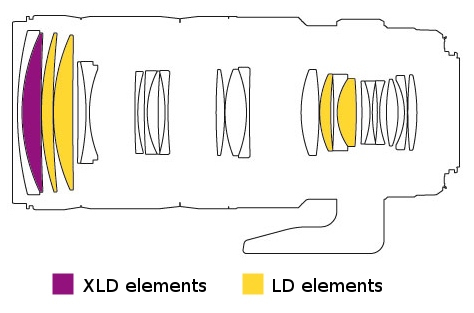 |
The optical construction of the new Tamron consists of 23 elements positioned in 17 groups; one of them is made of Extra Low Dispersion (XLD) glass and four are made of Low Dispersion glass. Inside there is also a circular aperture with nine diaphragm blades which can be closed down to a value of f/32.
Buyers get both caps, a tripod adapter and a hood in the box. Here Tamron lags behind its competitors which usually add a stylish hard case to their lenses.
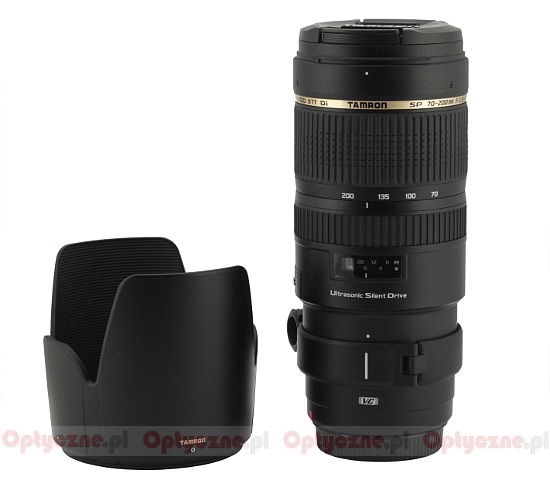 |
Image stabilization
Most optics producers nowadays boast of using optical stabilization as efficient as 4 EV. Tamron is not an exception to that rule. Now time for a reality check – let’s glance at a graph, presented below.
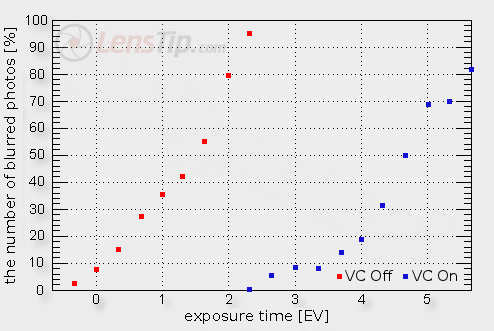
You see here the percentage of blurred photos depending on the time of exposure, expressed in EV and the 0 EV point corresponds to 1/160 of a second. As you can notice the maximum distance between both curves reaches 3.5 EV and so we assess the real efficiency of the Tamron’s 70–200 mm f/2.8 VC stabilization. Such a result is very good, differing just slightly from the declared value; it compares favourably with the results of its rivals as well.






